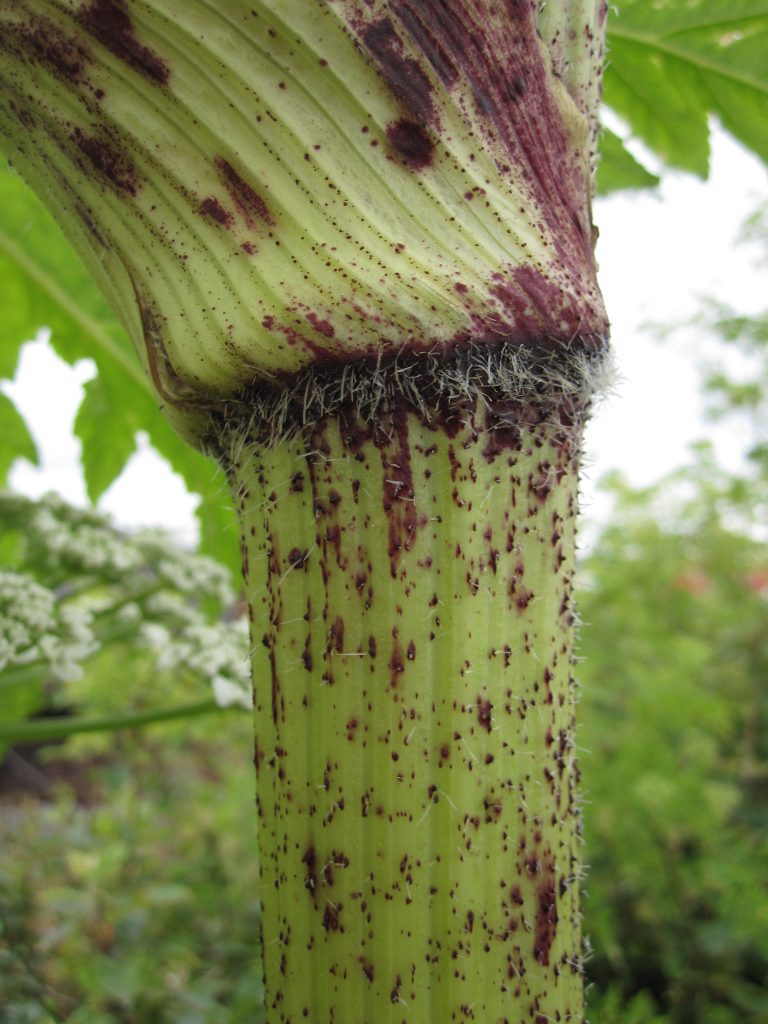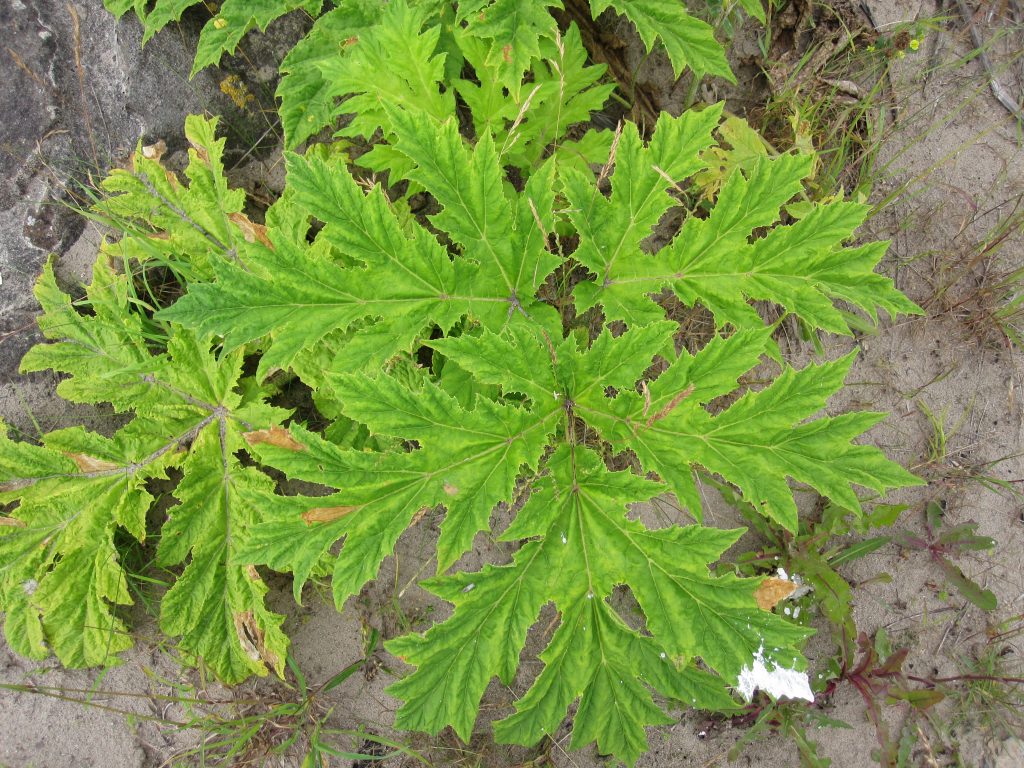A recent case of severe skin burns in a 10 year old caused by exposure to the sap of giant hogweed is a reminder that plants can be a danger. The child, who suffered third degree chemical burns and was hospitalised, had been making dens on a riverbank near Loch Lomond.
Giant hogweed (Heracleum mantegazzianum) is a native of SW Asia that has jumped the garden fence in Britain and gone wild. It is pretty widespread and particularly likes waste ground and riverbanks. As the name suggests this plant is big. Total height can exceed 5m and a single lower leaf can be as much as 2.5m across. However, smaller individuals are found and this member of the carrot family looks superficially similar to some harmless plants. So how can you identify it? Our native hogweed is a closely related cousin of giant hogweed and could be mistaken for it if you don’t know the tell-tale signs to look for. Here is a quick guide that will enable you to be alert to the danger posed by giant hogweed:
- Giant hogweed has roughly hairy stems that are flushed purple or have purple markings on a green background. Remember that the stems are normally very robust and will be 4-5cm in diameter. Our native hogweed has green stems with no hint of purple and will be more slender.
- Near the base of the stem the large lobed leaves will be at least 1m across and sometimes as much as 2.5m. If you feel the leaf between thumb and forefinger (this is safe to do as the sap is only released by breaking leaves and stems) you will feel the leaf is smooth and slightly waxy. In native hogweed the leaf will be less than 1m across and has a felt-like feel due to a dense covering of short hairs.
- The typical flowering head of all carrot family plants is an ‘umbel’ in which a series of stalks called ‘rays’ originate from a single point and radiate out to form a head rather like an umbrella. In giant hogweed the number of rays in each flowerhead can be as many as 50. In native hogweed you might find between 15-30 rays.
Here in Edinburgh giant hogweed is not uncommon and some impressive stands of these giant plants can be seen in various places. Seen en masse like this you can’t help thinking this is the closest thing we have to a real life triffid. The burning sap can even blind if it is splashed in the eyes! If you do get the sap on your skin wash it off as quickly as possible with warm soapy water. Try to avoid sun exposure as this aggravates the problem.
All the photographs used here were taken in Seafield.

Giant hogweed stem showing the typical purple marking, sometimes represented by a general purple background colour.



